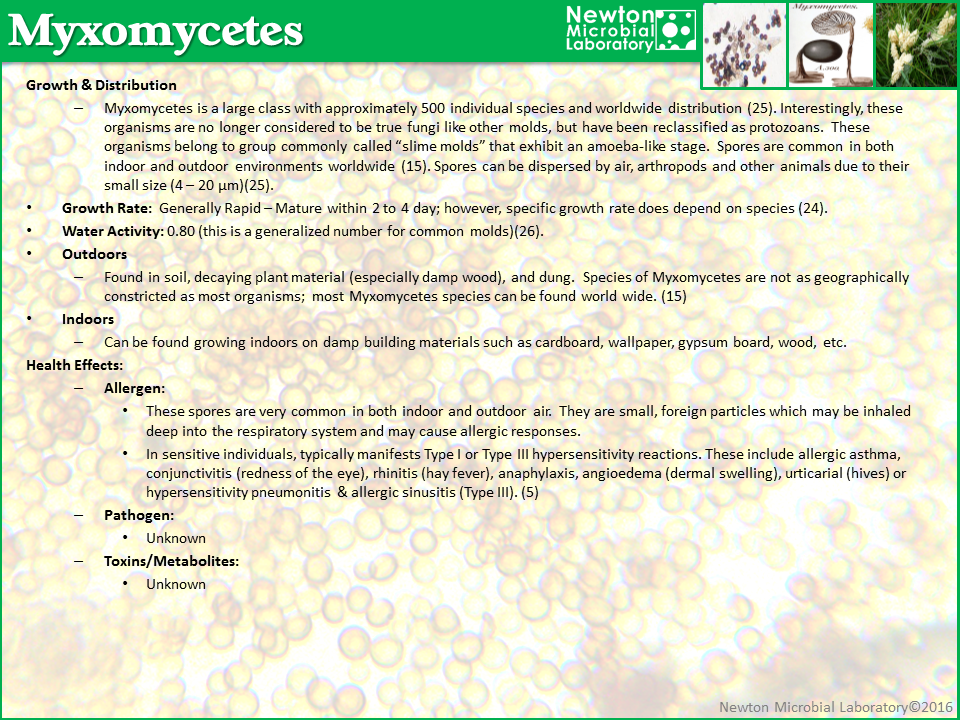Myxomycetes
Growth & Distribution
Myxomycetes is a large class with approximately 500 individual species and worldwide distribution (25). Interestingly, these organisms are no longer considered to be true fungi like other molds, but have been reclassified as protozoans. These organisms belong to group commonly called “slime molds” that exhibit an amoeba-like stage. Spores are common in both indoor and outdoor environments worldwide (15). Spores can be dispersed by air, arthropods and other animals due to their small size (4 – 20 µm)(25).
Growth Rate: Generally Rapid – Mature within 2 to 4 day; however, specific growth rate does depend on species (24).
Water Activity: 0.80 (this is a generalized number for common molds)(26).
Outdoors
Found in soil, decaying plant material (especially damp wood), and dung. Species of Myxomycetes are not as geographically constricted as most organisms; most Myxomycetes species can be found world wide. (15)
Indoors
Can be found growing indoors on damp building materials such as cardboard, wallpaper, gypsum board, wood, etc.
Health Effects
Allergen:
These spores are very common in both indoor and outdoor air. They are small, foreign particles which may be inhaled deep into the respiratory system and may cause allergic responses.
In sensitive individuals, typically manifests Type I or Type III hypersensitivity reactions. These include allergic asthma, conjunctivitis (redness of the eye), rhinitis (hay fever), anaphylaxis, angioedema (dermal swelling), urticarial (hives) or hypersensitivity pneumonitis & allergic sinusitis (Type III). (5)
Pathogen:
Unknown
Toxins/Metabolites:
Unknown

